Sistrum: A Magical, Sacred Ancient Egyptian Musical Object
A. Sutherland - AncientPages.com - The ancient Egyptian object known as the sistrum is often associated with Hathor, a goddess who personified the principles of joy, feminine love, and motherhood.
She was known as "the Great One of Many Names," and her titles and attributes are so numerous that she was important in every area of the life and death of the ancient Egyptians.
Left: Head of Goddess Hathor, who is associated with the sistrum. Credit: Metropolitan Museum of Art - Public Domain- Right: Nefertari, wife of Ramesses II, holding a sistrum. Credit: Laban66 - Public Domain
She was a sky goddess, known as "Lady of Stars" and "Sovereign of Stars" and linked to Sirius (and so the goddesses Sopdet and Isis). Her birthday was celebrated on the day that Sirius first rose in the sky. During the Ptolemaic period, she was known to the Greeks as the goddess of Hethara, the third month of the Egyptian calendar.
The sistrum (rattle) used by Hathor and ancient Egyptians was a musical percussion instrument. It was also used in ancient Greek musical practices and often depicted in visual arts such as sculpture and pottery.
The object was made from clay, wood, or metal. The instrument provided rhythmical accompaniment to other instruments, particularly in religious rites and festivals.
Its name is derived from the Greek, 'seiein', meaning "to shake."
The sound of the sistrum is metallic, produced by many metal disks or squares, strung onto a set of transverse bars, set horizontally into a frame of varying design. Its sound was thought to echo that of a stem of papyrus being shaken. However, the acoustic effects were frequently extremely limited. Nevertheless, the sistrum was suitable for beating a rhythmical accompaniment in open-air processions.
Apuleius, the Roman philosopher, described a procession in honor of Isis in The Golden Ass, where the rhythmic pattern was three beats followed by a pause on the fourth.
The instrument's sound seems to have been regarded as protective and symbolic of divine blessing and the concept of rebirth. In addition to the symbolic significance of its sound, the shape and decoration of the sistrum relate it to the divine.
Left: Collection of sistrums at the Louvre. Credit: Rama - CC BY-SA 2.0 fr - Right: Romanized Isis holding a sistrum, also from the time of Hadrian. Credit: Marie-Lan Nguyen - Public Domain
Two forms of this ceremonial instrument may be distinguished, the oldest of which is probably the naos sistrum (ancient Egyptian).
While Hathor's head was often depicted on the handles of sistrum, an early travertine sistrum inscribed with the name of the 6th Dynasty ruler, Teti, takes the form of a papyrus topped by a naos, which is itself surmounted by a falcon and cobra, thus forming a rebus of the name Hathor (i.e., hwt Hor).
Thus, the sistrum known as the naos sistrum dates back to at least the Old Kingdom. It was usually surmounted by twin heads of Hathor upon which a small shrine or naos-shaped box was set. A vulture may crown the naos, and the handle may be covered with the incised plumage of the bird. Rods were passed through the sides of this naos to form the rattle.
Carved or affixed spirals framing the sides of the naos represented the horns of the cow-eared goddess. Note that this earliest form of sistrum was often made of faience.
Most surviving sistrum instruments usually date to the Greco-Roman Period, when the second type of sistrum was common. It is referred to as a hooped (or arched) sistrum, known in ancient Egypt as shm or ib. It is known from the 18th Dynasty onward, though it seems to be based on earlier prototypes for which we have the hieroglyphic designation but no depictions.
There are surviving examples of sistrums in bronze, mostly found in a burial context. An interesting example dates from the second half of the 2nd century BCE, found in Attica. This sistrum has four bronze horizontal bars of decreasing length, which slide in and out of the hoop. On the top of the hoop is a modeled dog, there is a modeled bull's head at the base of the handle. The handle itself is carved to represent a cluster of six auloi in order to resemble a column that is topped by a carved capital, joining the handle to the hoop.
In Greek art, dancers in processions are occasionally depicted holding a sistrum. A celebrated example is the Harvester Vase from Hagia Triada on Minoan Crete (1500-1450 BCE) which depicts a sistrum player in a harvest festival procession.
It is believed that this sacred ancient Egyptian instrument originated in the worship of Bastet. It was used in dances and religious ceremonies, particularly in the worship of the goddess Hathor, with the U-shape of the sistrum's handle and frame seen as resembling the face and horns of the cow goddess.
It was also shaken to avert the flooding of the Nile and to frighten away Set. In her role as mother and creator, Isis was depicted holding a pail symbolizing the flooding of the Nile in one hand and a sistrum in the other. Likewise, the goddess Bast is often depicted holding a sistrum, symbolizing her role as a goddess of dance, joy, and festivity.
Written by – A. Sutherland AncientPages.com Staff Writer
Updated on June 27, 2021
Copyright © AncientPages.com All rights reserved. This material may not be published, broadcast, rewritten or redistributed in whole or part without the express written permission of AncientPages.com
More From Ancient Pages
-
 Ancient Roman Coins Discovered In Utah Could Re-Write History But Are They Authentic?
Archaeology | Apr 23, 2019
Ancient Roman Coins Discovered In Utah Could Re-Write History But Are They Authentic?
Archaeology | Apr 23, 2019 -
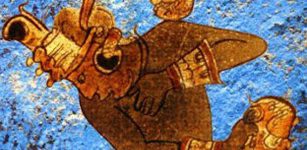 Mystery Of The Maya Blue Pigment And Its Unusual Chemical Composition
Ancient History Facts | Mar 23, 2016
Mystery Of The Maya Blue Pigment And Its Unusual Chemical Composition
Ancient History Facts | Mar 23, 2016 -
 Ancient Intriguing Sao People: “Men From Another Time” – One Of The Oldest Civilizations Of Central Africa
Featured Stories | Sep 28, 2015
Ancient Intriguing Sao People: “Men From Another Time” – One Of The Oldest Civilizations Of Central Africa
Featured Stories | Sep 28, 2015 -
 Isotope Analysis Helps Tell The Stories Of Aboriginal People Living Under Early Colonial Expansion
Archaeology | May 2, 2023
Isotope Analysis Helps Tell The Stories Of Aboriginal People Living Under Early Colonial Expansion
Archaeology | May 2, 2023 -
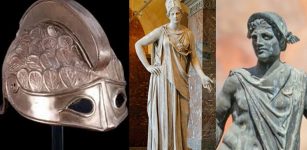 Magical Cap Of Invisibility Worn By Athena, Hades, Hermes, And Perseus
Featured Stories | Mar 25, 2019
Magical Cap Of Invisibility Worn By Athena, Hades, Hermes, And Perseus
Featured Stories | Mar 25, 2019 -
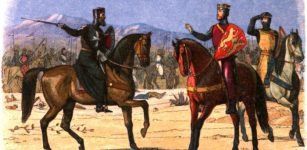 First Crusade Was Launched In 1095
Ancient History Facts | Jun 19, 2018
First Crusade Was Launched In 1095
Ancient History Facts | Jun 19, 2018 -
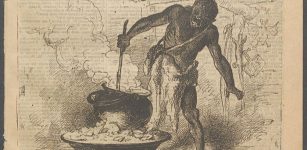 Obeah: Who Were The Feared Shadow Killers Of Jamaica?
Ancient Traditions And Customs | Sep 24, 2018
Obeah: Who Were The Feared Shadow Killers Of Jamaica?
Ancient Traditions And Customs | Sep 24, 2018 -
 On This Day In History: Battle Of Visby, Gotland Was Fought – On July 27, 1361
News | Jul 27, 2016
On This Day In History: Battle Of Visby, Gotland Was Fought – On July 27, 1361
News | Jul 27, 2016 -
 On This Day In History: HMS Challenger Begins Scientific Exploration Of Oceans – On Dec 21, 1872
News | Dec 21, 2016
On This Day In History: HMS Challenger Begins Scientific Exploration Of Oceans – On Dec 21, 1872
News | Dec 21, 2016 -
 Earliest Ochre Crayon Used By Our Ancestors 10,000 Years Ago Found In Yorkshire, Northern England
Archaeology | Jan 29, 2018
Earliest Ochre Crayon Used By Our Ancestors 10,000 Years Ago Found In Yorkshire, Northern England
Archaeology | Jan 29, 2018 -
 White Temple Of God Anu In Sacred Precinct Of Kullaba At Uruk
Civilizations | Oct 10, 2016
White Temple Of God Anu In Sacred Precinct Of Kullaba At Uruk
Civilizations | Oct 10, 2016 -
 L’Anse Aux Meadows – Viking Site Confirms Norse Vinland Sagas Were Based On Real Events
Featured Stories | Jun 10, 2021
L’Anse Aux Meadows – Viking Site Confirms Norse Vinland Sagas Were Based On Real Events
Featured Stories | Jun 10, 2021 -
 Hidden Ancient Underground Tomb Discovered In Petra May Solve The Mystery Of The Nabataean Kingdom
Places | Oct 18, 2024
Hidden Ancient Underground Tomb Discovered In Petra May Solve The Mystery Of The Nabataean Kingdom
Places | Oct 18, 2024 -
 What Happened To The Homo Sapiens In The Thar Desert When They Encountered The Indian Monsoon System
Archaeology | Oct 5, 2021
What Happened To The Homo Sapiens In The Thar Desert When They Encountered The Indian Monsoon System
Archaeology | Oct 5, 2021 -
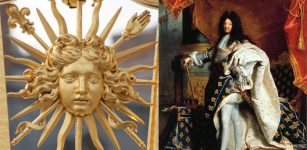 Why Was Louis XIV Called The Sun King?
Ancient History Facts | Jul 11, 2019
Why Was Louis XIV Called The Sun King?
Ancient History Facts | Jul 11, 2019 -
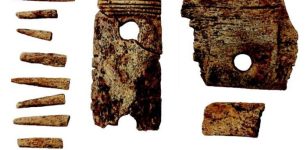 Large Anglo-Saxon Burial With Bodies And Roman Artifacts Found At Bicker Fen, Lincolnshire, UK
Archaeology | Aug 14, 2023
Large Anglo-Saxon Burial With Bodies And Roman Artifacts Found At Bicker Fen, Lincolnshire, UK
Archaeology | Aug 14, 2023 -
 Cousin-Marriages Were Uncommon In The Ancient World
Archaeology | Sep 14, 2021
Cousin-Marriages Were Uncommon In The Ancient World
Archaeology | Sep 14, 2021 -
 Amazing Prehistoric Forest Submerged Under Water Thousands Of Years Ago Re-Emerges On Welsh Beach
Archaeology | Nov 11, 2022
Amazing Prehistoric Forest Submerged Under Water Thousands Of Years Ago Re-Emerges On Welsh Beach
Archaeology | Nov 11, 2022 -
 On This Day In History: Battle Of Pinkie Was Fought – On September 10, 1547
News | Sep 10, 2016
On This Day In History: Battle Of Pinkie Was Fought – On September 10, 1547
News | Sep 10, 2016 -
 Fossil Study: Coelacanths Thrived In Switzerland After A Mass Extinction
Fossils | Jul 28, 2023
Fossil Study: Coelacanths Thrived In Switzerland After A Mass Extinction
Fossils | Jul 28, 2023


